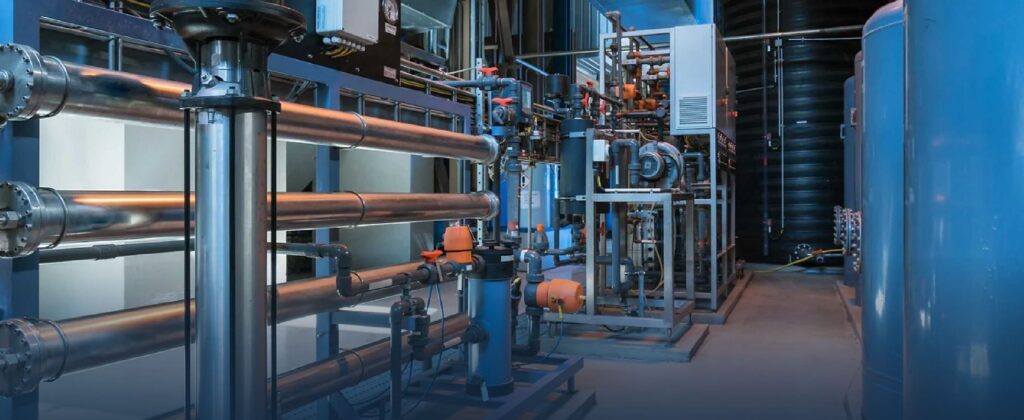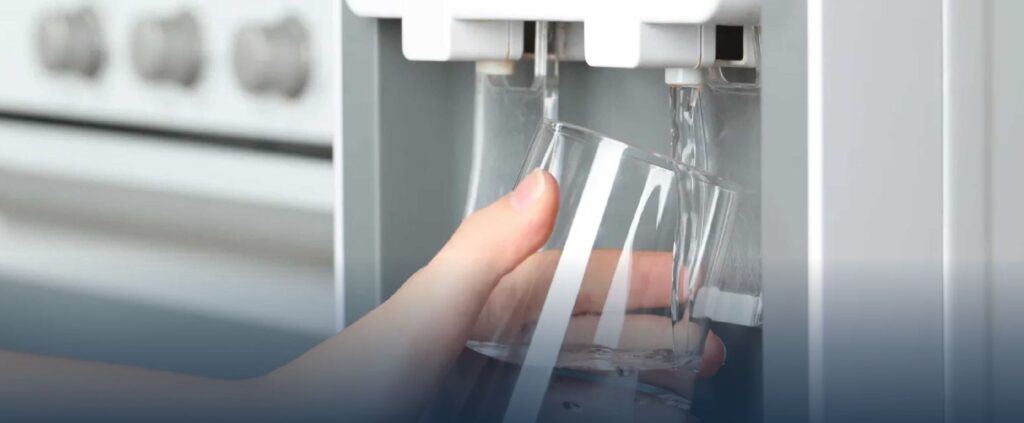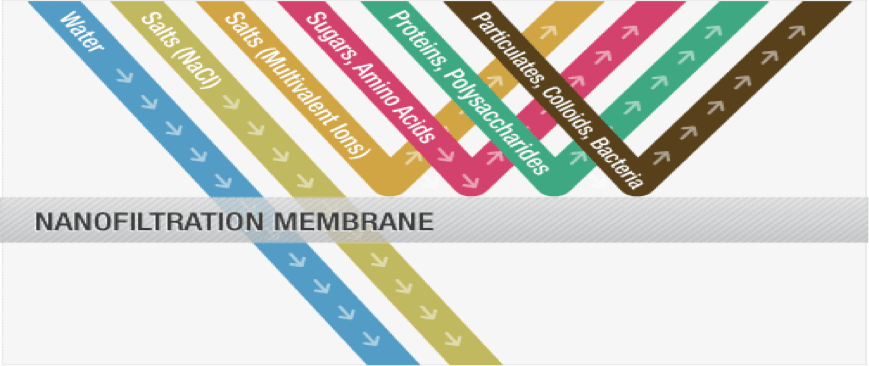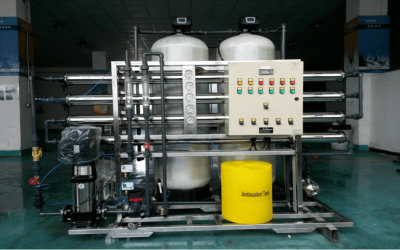Nanofiltration
Nanofiltration (NF) functions similarly to reverse osmosis but is generally targeted to remove only divalent(bivalent) and larger ions. Monovalent ions such as sodium and chloride will pass through a nanofiltration membrane, therefore many of its uses involve de-salting of the process stream. Pacific Water Technology supplies a large range of Nanofiltration systems specifically designed to remove the hardness from water, without the need for ion exchange.
In the production of lactose from cheese whey, for example, NF concentrates lactose molecules while passing salts, a procedure that purifies and concentrates the lactose stream. In water treatment, NF membranes are used for hardness removal (in place of water softeners), pesticide elimination, and colour reduction. It can also be used to reclaim spent NaOH solutions, in which case the permeate stream is purified NaOH, allowing reuse many times over.
Below is a summary of applications for Nanofiltration:
- Desalination of food, dairy and beverage products or by-products
- Partial Desalination of whey, UF permeate or retentate as required
- Desalination of dyes and optical brighteners
- Purification of spent clean-in-place (CIP) chemicals
- Colour reduction or manipulation of food products
- Concentration of food, dairy and beverage products or by-products
- Fermentation by-product concentration.
Pacific Water Technology has launched a new series of complete skid-mounted nanofiltration systems, designed to be specifically used as water softeners. These units are particularly suited in applications where ion exchange is not desirable, due to the presence of monovalent ions, or the environmental issues relating to the disposal of brine effluent. To ensure the longevity of the membrane, the system also includes a continuous antiscalant pump ensuring that concentrated hardness salts do not foul the membrane.
[Pacific Water Technology’s New Nanofiltration System Being Assembled]





